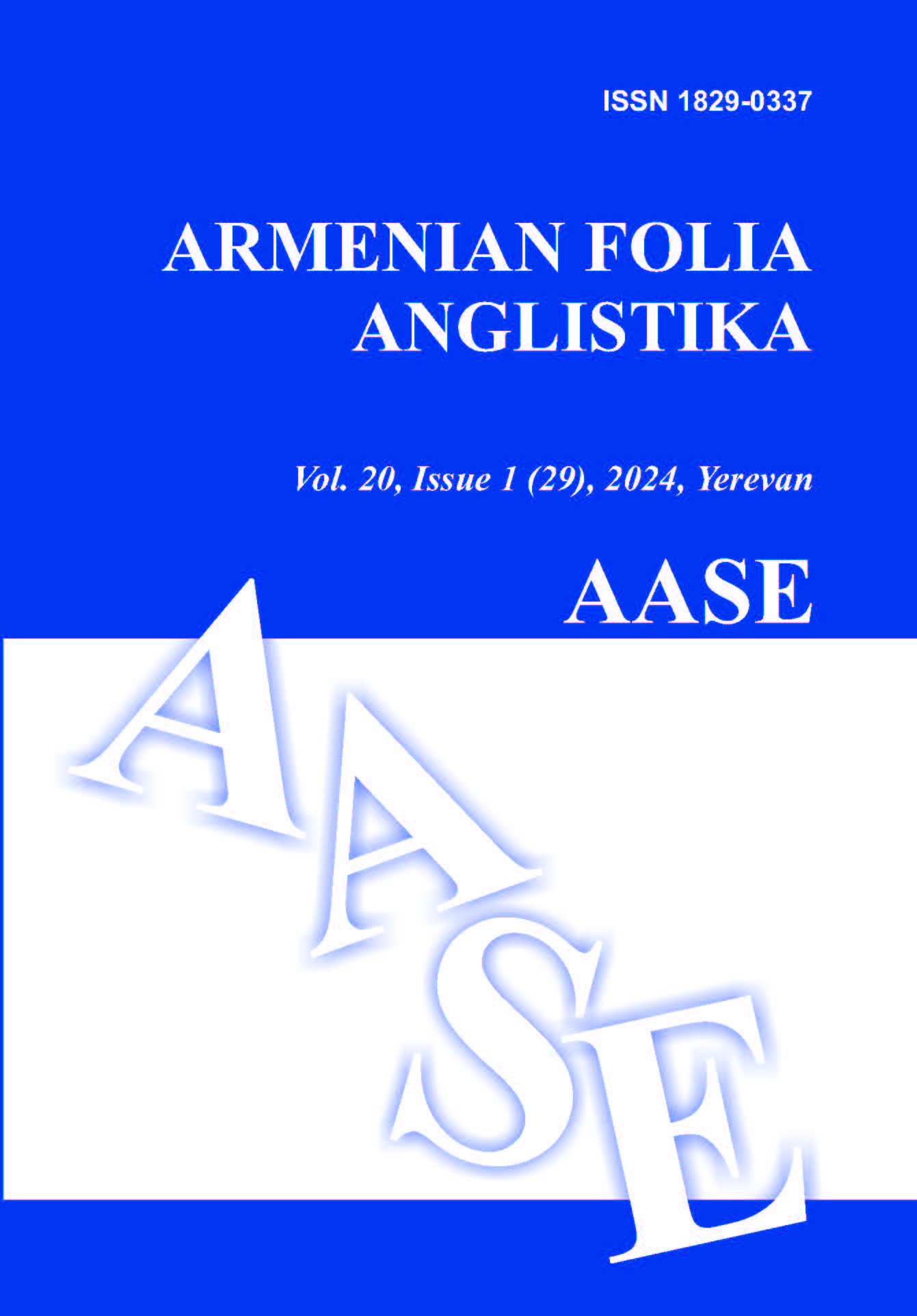LINGUO-STYLISTICS OF HORROR IN E. A. POE’S SHORT STORIES
DOI:
https://doi.org/10.46991/AFA/2024.20.1.80Keywords:
emotions, fear, horror fiction, Poe, stylistic devices, expressive meansAbstract
Horror is a genre of science fiction which is intended to, or has the capacity to frighten, scare or disgust the readers by inducing feelings of horror and terror. This piece of fiction in prose of variable length also shocks and startles the readers inducing feelings of repulsion or loathing through creating a frightening atmosphere. Horror is frequently supernatural, though it can be non-supernatural. Often the central menace of a work of horror fiction can be interpreted as a metaphor for the larger fears of a society. The present investigation of horror in E. A. Poe’s short stories through the linguo-stylistic and case study methods of analyses aims to disclose the very distinct role of horror fiction in the perspective of human emotions – a kind of “mediator” between the world and its reflection in the language. The results show that emotions as a psychological, physiological and philosophical phenomenon verbally reproduce the emotional attitude of the person towards the world, that emotions are contained, fixed, expressed and indicated in utterances in the form of ideas – and as such – emotions are a perfect object of linguo-stylistic study.
Downloads
References
Apresjan, V. Ju. (2008). Russian and English emotional concepts. Moscow: Institute of Russian Language.
Calhoun, Ch., & Solomon, R. C. (1984). What is an emotion? New York, Oxford: Oxford University Press,
Carroll, E.I. (1977). Human emotions. NY; Springer New York.
Ekman, P. (2007). Emotions revealed: recognizing faces and feelings to improve communication and emotional life. NY: Henry Holt and Company.
Fear in Literature. (n.d.). In enotes.
Foolen, A. (2012). The relevance of emotion for language and linguistics. John Benjamins Publishing Company.
Kövecses, Z. (1990). Metaphor and Emotion. Cambridge University Press.
Lakey, H. K.( 2016). The Grammar of fear: morphosyntactic metaphor in fear constructions. (Doctoral Dissertation, University of Oregon, Oregon, US).
Lovecraft, H. P. (2013). Supernatural horror in literature. Wermod and Wermod Publishing Group.
Masters, K. (2013). A brief history of horror literature. In BOOKS TELL YOU WHY.com
Ohman, A. (2000). Fear and anxiety: evolutionary, cognitive, and clinical perspectives. In M. Lewis & J. M. Haviland-Jones (Eds.), Handbook of emotions (pp. 573–593). New York: Guilford Press.
Prohászková, V. (2012). The genre of horror. Macedonia: University of Ss. Cyrill and Method.
Sapir, E. (1921). Language: an introduction to the study of speech. New York: Harcourt, Brace & World Inc.
Solomon, R.C. (2003). What is an emotion? New York: Oxford .
Wierzbicka, A. (1992). Emotions across languages and cultures. Cambridge University Press.
Wright, A. (2007). Terror and horror: gothic struggles. Gothic Fiction (pp.35-56) London: Macmillan Education UK. http://dx.doi.org/10.1007/978-1-137-03991-0_3.
Sources of Data
Poe, E.A. (1835). Berenice. United States: Southern Literary Messenger.
Poe, E.A. (1983). Prose and Poetry: Moscow, Raduga Publishers.
Downloads
Published
How to Cite
Issue
Section
License
Copyright (c) 2024 Author(s)

This work is licensed under a Creative Commons Attribution-NonCommercial 4.0 International License.














